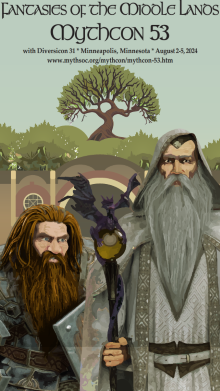Abstract
In my article, I discuss a peculiar connection between the persisting ideas about magic in the Western world and Ursula Le Guin's magical world in the Earthsea universe and its evolution over the decades. For centuries in the Western European culture, magic has been a subject for an ongoing debate vacillating between the total rejection of this part of human spiritual life or reluctant acceptance of it. There is also some internal hierarchy of types of magic revealed in the dichotomy "magic versus witchcraft". Encyclopaedia Britannica describes magic and witchcraft as two separate phenomena, connected yet distinctively different. The former is an umbrella term for everything that is or might be perceived as magical. Yet, in the Western world, the concept of magic has strong connections with Western esoteric tradition and is quite often designated as "learned magic" implying hard learning and intellectual practices, in particular knowledge of ancient and secret languages. Moreover, learned magic had been an exclusively male occupation for centuries and, to some extent, complied with the dominant Christian worldview. Witchcraft, on the other hand, does not normally demand much learning; however, practitioners are expected to have an inborn or acquired ability to work magic. In the context of Western culture, witchcraft has predominantly been a female practise and, until recently, stigmatized as demonic. There is also a third branch of magic designated by J. R. R. Tolkien in his seminal essay "On Fairy-Stories" as Faërie – the magic of non-human magical creatures as there natural ability, which is the strongest of all magical types and does not seem to have any limitations. Once people used to believe in this magic in real life, now it has found its refuge in fiction retaining its power over readers' minds. There is a remarkable coincidence with the described magical hierarchy in Le Guin's stories about the Earthsea. Male magic is taught at the school of Roke, demanding not only special abilities but also considerable intellectual input, and is based on the knowledge of an ancient language. Female magic is considered weak, unlearned and even unnatural ("weak as a woman's magic, wicked as a woman's magic"). There is also the magic of dragons as mighty magical/Faërian creatures. Le Guin starts her Earthsea series in quite a patriarchal mode of magicity. In the original trilogy, she keeps to this strategy though strong and powerfully magical yet marginalized female characters such as Serret sometimes appear on the pages of the three novels. The original trilogy (1968-1972) was written in the time when men still dominated the genre, and magical ideas in fiction predominantly followed the "patriarchal pattern" with male wizards/mages helping a hero and female witches/enchantresses represented as seductresses or embodiment of evil. However, in Tehanu (1990), which was written in the postmodern era, begins a revision of the magical ideas in the Earthsea universe, which is continued in the collection of the short stories Tales from Earthsea (most of the stories were written in the late 90s and after 2000) and in the last book On the other wind (2001). In these later stories, there are glimpses into the true history of magic in Earthsea revealing the importance of women in establishing the magical lore; the emphasis is put on the necessity to re-unite human magic again allowing both men and women to study magic at the school of Roke. Faërian dragon magic proves to be the strongest and, after having accomplished its ends, seems to remove to the Western parts of the world, as it is so peculiar for Faerie (the western location of the Celtic Otherworld or Tolkien's Undying Lands as examples). The evolution of magical ideas in the Earthsea stories over several decades of XX and XXI centuries reflects not only the dynamics of Le Guin's notion of magicity but also the turn in the estimation of magical phenomena which took place during the same period (marked by the appearance of such new academic field of research as Western Esotericism or re-evaluation of the history of witchcraft in the West). All this, once again, reveals Le Guin's remarkable sensitivity to cultural shifts.
Creative Commons License

This work is licensed under a Creative Commons Attribution-NonCommercial-No Derivative Works 4.0 International License.
Copyright held by Artist


